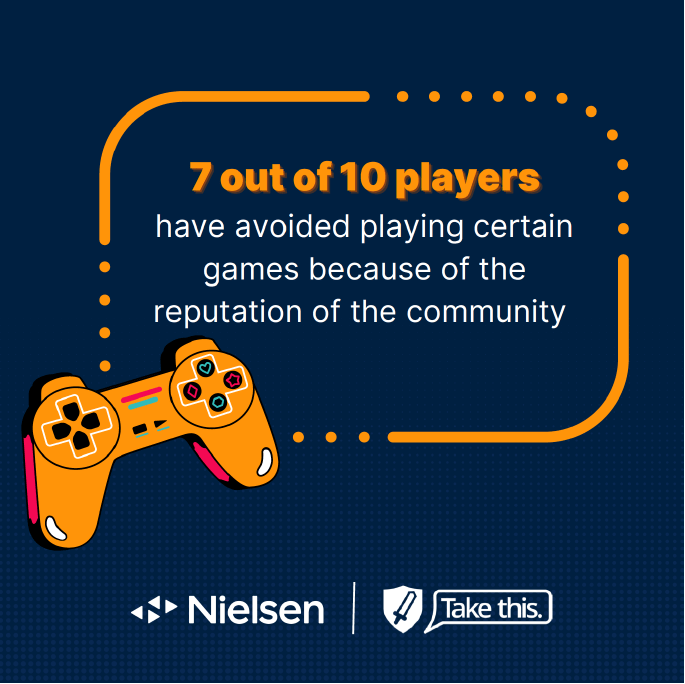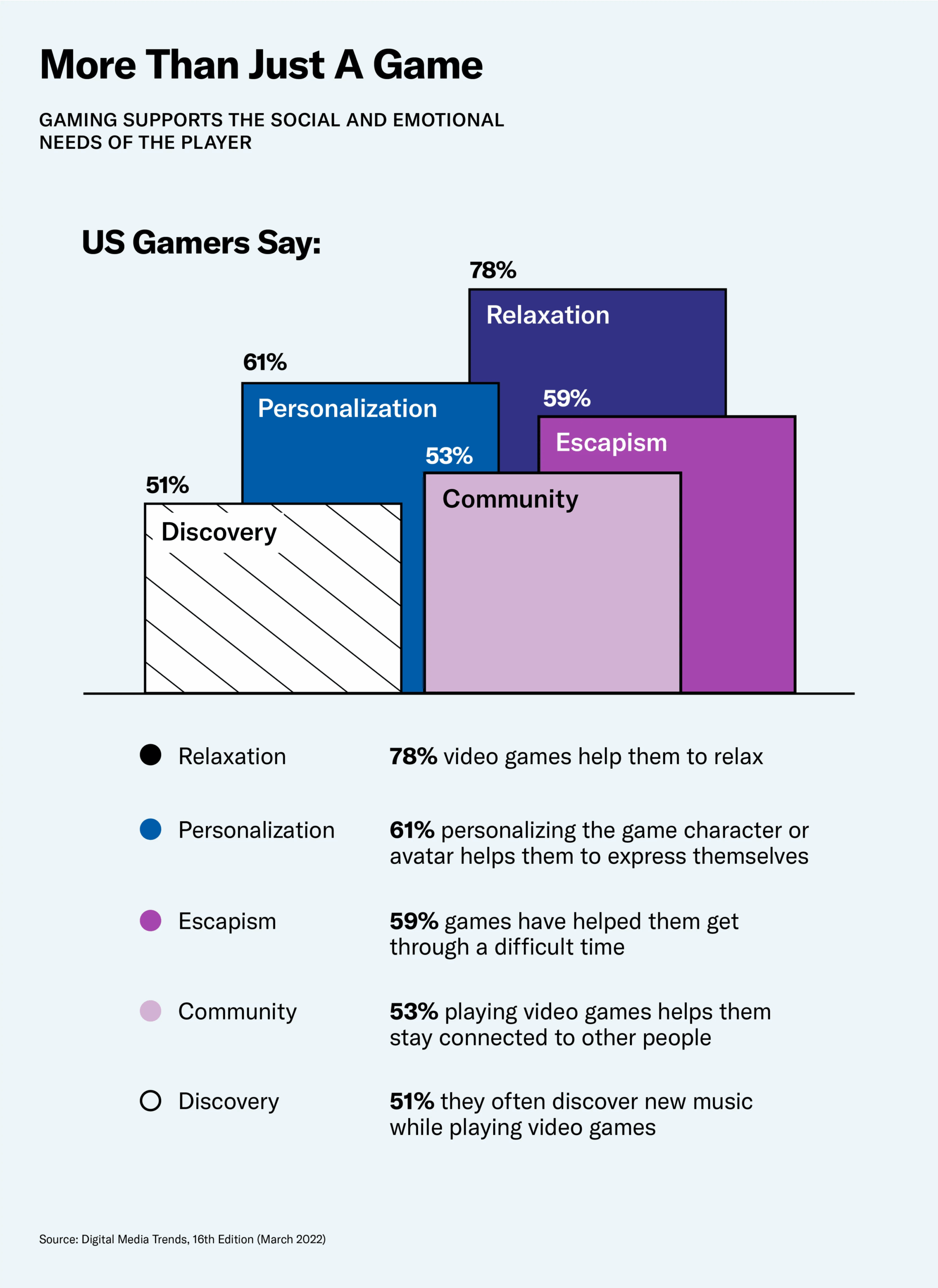09 Sep

The Gaming industry has innovated in countless ways, including Community Management. This discipline has grown into a mission much bigger than just keeping conversations in line – but into a revenue driver as well.
Today’s moderators help shape how fans feel about an app, product or game , how creators interact with a brand, and how a community grows over time. In turn, a strong community focus builds trust, keeps players coming back, and encourages them to bring their friends.
Brands that treat community as one of the most important parts of their growth strategy see excellent results in user retention, lifetime value, organic growth, and much more.
Quick Takeaways:
- Community management affects retention more than one-off moderation actions.
- Proactive moderation plus sentiment analysis helps product teams iterate faster.
- Integrating moderation across multiple channels – like text, voice, user reports, etc – prevents negative experiences at scale.
- Cross-functional workflows turn audience feedback into product and marketing signals.
- You can measure impact with the right KPIs: incidents, DAU, retention/churn, user sentiment, etc
Community Management and Revenue Connect More Than Many Think
In video games, players don’t just buy a game – they buy an experience. Community health shapes that experience.
According to research, 6 out of 10 players report they chose to not spend money in a game because of how they were treated in that community.
Negative encounters greatly push players away, because, the reality is, no one wants to spend time on a place they feel unwelcome.
On the other hand, positive and safe communities encourage players to socialize and play more. Both outcomes affect monetization.
Decades of video game research, give all brands three direct business levers that community teams can impact:
- Retention: Users who feel safe and welcome return more often. More sessions mean more opportunities for monetization through events, aesthetic purchases, or subscriptions.
- Creator Engagement: Streamers and creators talk about your product more when they trust your moderation and moderation policies. This is a form of organic advertisement that can bring in new audience members without directly having to spend money.
- Product Feedback Loop: Community engagement shows product gaps, feature interest, and user pain points. Acting on those signals shortens product iteration cycles and improves feature adoption.
Put simply: Better communities equal better business metrics.

The Modern Community Stack
The average person lives their life online now, so general engagement numbers and traffic online are up. That means manual moderation alone isn’t sustainable to handle the increased volumes and issues that arise. Successful, modern companies align people, process, and automation.
53% of people play games just for the community itself. Many of the most successful games (recent hits like League of Legends, Minecraft, and Fortnite) thrive because of their loyal player bases. The same is becoming true for media and consumer brands as well.
Here’s what a community stack should cover:
- Real-time detection for text and voice.
- Policy-native automation to take actions that match your brand rules.
- A reporting pipeline so Trust & Safety/Moderation teams can triage quickly.
- Sentiment analysis that feeds product and marketing dashboards.
- Clear escalation and appeals workflows for transparency.
When those pieces work together, community teams spend way less hours chasing people down and more time shaping the culture they want to represent.

How to Measure Your Metrics
Your community needs to track KPIs in order to know where it’s performing well/struggling. Focus on a mix of operational and business metrics:
Operational Metrics:
- Number of incidents by severity
- Time to first response and time to resolution
- False positive rate for automated actions
Business Metrics:
- Daily and monthly active users in monitored cohorts
- Retention at day 7, 30, and 90
- Revenue per active user and ARPPU for monetized cohorts
- Creator engagement and referral traffic
Metrics aren’t always easy to identify and track, but as a general rule, intertwine moderation/sentiment outputs to product/revenue dashboards. When community specifics start showing up in revenue models, it’s easier to track budget and get executives on your side.
Taking Community Moderation One Step Further
Most community tools on the market focus on just one area of moderation, like managing user reports or broad content scanning for either text, voice or images. Others emphasize features like analytics or community communication alerts. All of these are helpful, but not sufficient on their own.
Detection tells you WHEN there’s a problem. What matters most for business is HOW you act on it.
How to Stand Out:
- Match enforcement to your brand’s policy, not generic rules. Context matters in voice and text.
- Whenever possible, automate decisions that have high efficacy and frequency.
- Feed sentiment into product and marketing so you can act faster on emergent trends.
- Make appeals and creator workflows easy so enforcement is transparent and defensible.
- Treat moderation as part of live ops, not an, “I’ll get to that later.”
That gap between detection and action is where community programs change from reactive moderation into strategic powerhouses.
Operational Tips for Product and Community Leaders
If you lead community, product, or Trust & Safety, start with these steps:
- Align KPIs across community, product, and marketing. Shared goals create alignment. Alignment creates success.
- Build an escalation ladder. Define what triggers automated actions and when it’s time for humans to step in.
- Run a pilot in targeted regions to measure retention and creator engagement impacts.
- Use sentiment analysis to prioritize product fixes and content updates.
- Keep creators informed. Fast, consistent communication builds trust and encourages advocacy.
Short cycles, clear thresholds, and fast feedback are far more digestible than heavy-handed enforcement. When in doubt, over-communicate with your audience.
Voice + Chat Are a Packaged Deal—Monitor Them Wisely
In many games, players move between voice and chat seamlessly, often layering in Discord as well. Moderation that treats them separately misses context, potentially allowing a single bad actor to negatively impact all channels.
Integrated detection and policy-native actions catch those red-flag patterns earlier. It reduces false positives and avoids punishing casual banter among friends while still protecting solo players in matchmaking.
Getting Cross-Functional Approval
Community teams typically need executive support or approval from upper management to scale tools and workflows. Make your case more convincing with concrete pilots and revenue-linked metrics:
- Use historic data as a test and then run a controlled pilot. Show reductions in incident volume and faster response times.
- Map pilot results to retention and monetization changes. Even small lifts matter at scale.
- Share creator engagement data to show earned reach. Marketing leaders will pay attention.
- Present operational savings from automation to finance and ops.
When results are tied to dollars and retention, leadership is more likely to listen.
Managing Communities (The Right Way) is More Important Than Ever
Community management isn’t a back-office task anymore. It’s a product lever that touches retention, creator relations, marketing, and revenue. When brand teams combine real-time detection, policy-native automation, and sentiment analysis, they get clearer signals and faster action. That’s how community work starts to move the business needle.
It’s time to build a brand-safe community that keeps users engaged. If you want to see how integrated moderation and sentiment can fit into your live ops stack, start with GGWP’s Community Copilot. Contact us to learn how we can help your community grow!